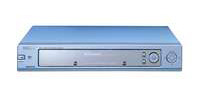Adobe Systems Incorporated (Nasdaq: ADBE) has announced a definitive agreement to acquire Macromedia (Nasdaq: MACR) in an all-stock transaction valued at approximately $3.4 billion. Under the terms of the agreement, which has been approved by both boards of directors, Macromedia stockholders will receive, at a fixed exchange ratio, 0.69 shares of Adobe common stock for every share of Macromedia common stock in a tax-free exchange. Based on Adobe’s and Macromedia’s closing prices on Friday April 15, 2005, this represents a price of $41.86 per share of Macromedia common stock.
The combination of Adobe and Macromedia strengthens our mission of helping people and organizations communicate better. Through the combination of our powerful development, authoring and collaboration tools – and the complementary functionality of PDF and Flash – we have the opportunity to drive an industry-defining technology platform that delivers compelling, rich content and applications across a wide range of devices and operating systems.
By combining the passion and creativity of two leading-edge companies, we will continue driving innovations that are changing the ways people everywhere are experiencing and interacting with information.
Adobe is required to include the following legend on any communications that may be deemed to be offering or soliciting material under the applicable SEC rules and regulations:
ADDITIONAL INFORMATION AND WHERE TO FIND IT
Adobe Systems Incorporated intends to file a registration statement on Form S-4, and Adobe and Macromedia, Inc. intend to file a related joint proxy statement/prospectus, in connection with the merger transaction involving Adobe and Macromedia. Investors and security holders are urged to read the registration statement on Form S-4 and the related joint proxy/prospectus when they become available because they will contain important information about the merger transaction. Investors and security holders may obtain free copies of these documents (when they are available) and other documents filed with the SEC at the SEC’s web site at www.sec.gov. In addition, investors and security holders may obtain free copies of the documents filed with the SEC by Adobe by contacting Macromedia Investor Relations at 408-536-4416. Investors and security holders may obtain free copies of the documents filed with the SEC by Macromedia by contacting Macromedia Investor Relations at 415-252-2106.Adobe, Macromedia and their directors and executive officers may be deemed to be participants in the solicitation of proxies from the stockholders of Adobe and Macromedia in connection with the merger transaction. Information regarding the special interests of these directors and executive officers in the merger transaction will be included in the joint proxy statement/prospectus of Adobe and Macromedia described above. Additional information regarding the directors and executive officers of Adobe is also included in Adobe’s proxy statement for its 2005 Annual Meeting of Stockholders, which was filed with the SEC on March 14, 2005. Additional information regarding the directors and executive officers of Macromedia is also included in Macromedia’s proxy statement for its 2004 Annual Meeting of Stockholders, which was filed with the SEC on June 21, 2004 and Macromedia’s proxy statement for a Special Meeting of Stockholders, which was filed with the SEC on October 6, 2004. These documents are available free of charge at the SEC’s web site at www.sec.gov and from Investor Relations at Adobe and Macromedia as described above.


